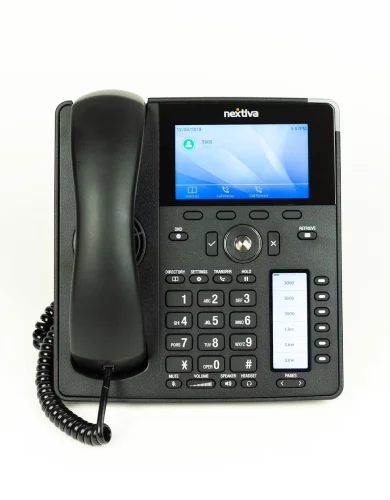A guide to business broadband installation
Across the UK, businesses are upgrading to gigabit-speed full fibre broadband as ultrafast networks rapidly expand.
Unlike a simple service upgrade, installing a new business broadband connection is a hands-on engineering process. It requires skilled engineers to survey the site, lay fibre-optic cables, and ensure the infrastructure is correctly integrated into your property.
This article breaks down the step-by-step process of a business broadband installation, the expected timescales, and what to do if delays occur.
Business broadband installation process step by step
Our business broadband experts have created a detailed step-by-step guide for a business broadband installation that covers SoGEA, full fibre, or cable business broadband connections.
Our guide does not cover wireless connections (5G, satellite, etc.) or leased line broadband installations, which are significantly more complex.
💡If you are simply changing provider or contract but keeping the same connection type, a new installation is not typically required. Instead, visit our switch business broadband article to understand how it works.
Step 1 – Checking broadband availability and choosing a provider
It is important to check which broadband networks are available at your address. The major networks, Openreach, Virgin Media, and Hyperoptic, each have different coverage.
Visit our business broadband availability page to discover which connection options are available to install at your address.
Once availability is confirmed, compare business broadband deals from the providers offering your chosen connection type.
Consider how much speed your business requires, the desired contract length, and which provider offers the most favourable business broadband prices.
Step 2 – Booking your business broadband installation
Some providers will allow you to schedule your installation date immediately after signing a business broadband contract for your new connection.
Other providers may need to inspect the fibre network near your property before committing to an installation date.
In most cases, the installation will be carried out by the network provider (e.g., Openreach) rather than the broadband provider.
Step 3 – Preparation for the installation date
It is important to ensure that a representative from your business is on-site during the agreed installation date. They may need to make decisions on the day, such as the location of your broadband hardware.
We recommend clearing space in the server room or IT closet where the broadband connection will enter your property. This will typically be the same room where your copper business phone line currently enters the building.
If you rent or lease your property, we recommend informing the landlord about your installation, as it may require small holes to be drilled into the outer wall. Some landlords may have preferred cabling routes or other restrictions.
The next steps are typically completed on the installation date agreed upon with your provider.
Step 4 – Laying a new cable
The first step of the business broadband installation engineering works is to connect your property to the existing network infrastructure with a new cable.
Depending on your chosen connection type, the cable will connect to one of the following:
- The nearest Openreach cabinet
- A nearby telephone pole
- Ducts underneath the nearest road
The engineers will take the easiest route to connect your property, which may require non-invasive microtrenching to lay a cable underground.
Step 5 – Building access point
The new fibre cable will typically enter your property through existing access points where available.
If a new access point is required, the engineer may install a small junction box on the exterior wall of your property to route the cable through.
A small hole will be drilled through the exterior wall to bring the cable inside. The hole will then be sealed to prevent weather damage.
Step 6 – Installing broadband hardware
Inside your building, the new cable will terminate at the following hardware, which your engineer will install:
- Optical Network Terminal (ONT) – Converts fibre signals into usable internet (for full fibre).
- Network distribution point – Connects to your local area network.
- Business broadband router – Provides a WiFi connection.
Step 7 – Testing and activation
Once the engineer has installed your new cable and hardware, they will test the connection.
The test will first ensure that there is sufficient signal strength through your cable to your hardware to support your connection.
Next, the engineer will activate your new service using their system.
The engineer will connect a laptop and run a business broadband speed test to check the speed, latency, and packet loss of your connection.
The engineer will only leave once the connection is activated and fully complies with the service level agreement in your broadband contract.
Step 8 – Business WiFi and network installation
The setup of your internal network is typically handled by your internal IT team or a managed IT service.
Here’s a list of tasks that are typically required:
- Configure broadband router – Update the admin credentials on your router for security and configure your firewall.
- Enable QoS (Quality of Service) – Set up to prioritise critical traffic, such as business VoIP phone systems.
- WiFi extension – Set up mesh networks or WiFi extenders if covering a large property.
- Wired connections – Wire up network switches, VoIP hardware, and other stationary devices.
- Guest network – Configure a guest network, if required.
- Network monitoring – Enable network monitoring tools to measure performance.
- Load balancing – Where your property has multiple broadband connections, set up a multi-WAN router for network load balancing.
How long does a business broadband installation take?
A business broadband installation can be as simple as setting up a 5G broadband router received by post or as complex as extensive engineering works at your property.
The complexity of a business broadband installation is primarily determined by the type of connection.
While the installation itself usually takes less than a day, the entire process, from signing your contract to your new connection going live, can take weeks.
Here’s a table showing the average time needed for different types of business broadband installations:
| Technology | Installation Process | Typical Timeframe (Signing contract to Go-live) |
|---|---|---|
| 5G business broadband | Typically no engineer visit required; just setting up a mobile router or dongle. Quick activation process. | 1-3 days |
| Satellite Business Internet | DIY installation of a satellite dish on-site or sometimes by an engineer, along with modem setup and signal testing. | 1-2 weeks |
| Standard fibre optic business broadband (SoGEA) | If upgrading from ADSL or similar, an engineer installs a modem and router, tests the line, and configures the service. | 1-2 weeks |
| Full Fibre Business Broadband | Typically requires a new fibre line installation and an on-site visit to set up an Optical Network Terminal (ONT) and router. | 1-3 days (With ONT) 2-3 weeks (Install ONT) |
What should I do if my business broadband installation is delayed?
Delays in the business broadband installation process are common, so it is important to prepare for this possibility. This is particularly crucial given the shift towards business VoIP providers, which require reliable internet to maintain VoIP call quality.
Here, our business broadband experts recommend the best ways to minimise the disruption caused by a delay in your broadband installation.
Wait before ending current broadband contract
We do not recommend cancelling your contract with your current business broadband provider until your new installation is complete.
This approach will result in an overlap where you pay for multiple services, but it is the most reliable way to avoid the disruption of being left without internet access.
Temporary internet solutions
In towns and cities, mobile business broadband can provide a quick interim solution with a dedicated 5G business broadband router.
It is worth asking the customer services team of your new business broadband provider if they can offer this during your installation delay.
Consider your current connections
Consider whether your current broadband connections can provide a quick way to regain internet access.
Most commercial properties in the UK have a copper phone line connection that can support a SoGEA connection. If this is the case, it may be possible to activate the connection with a new provider in just a few days.

